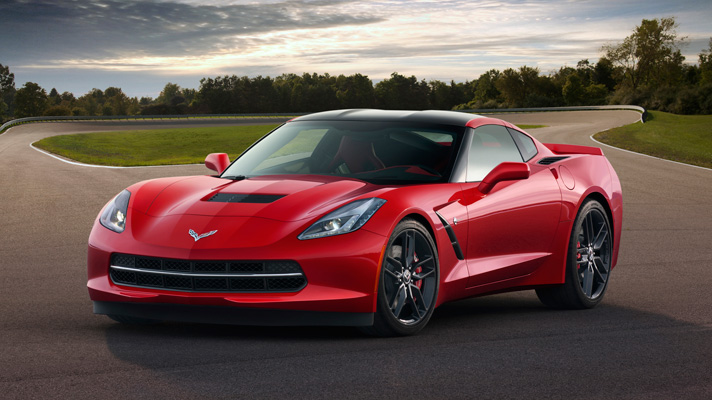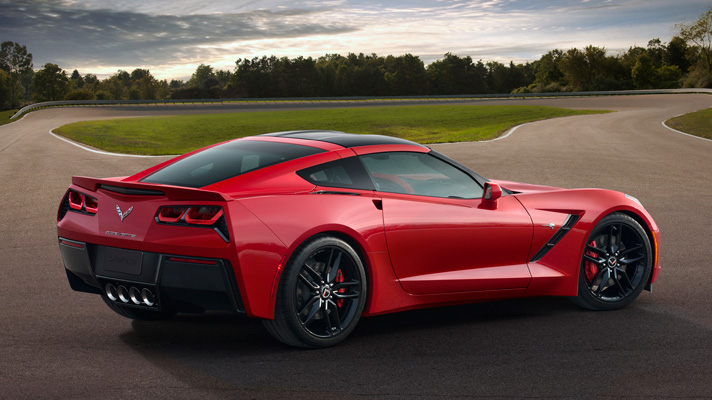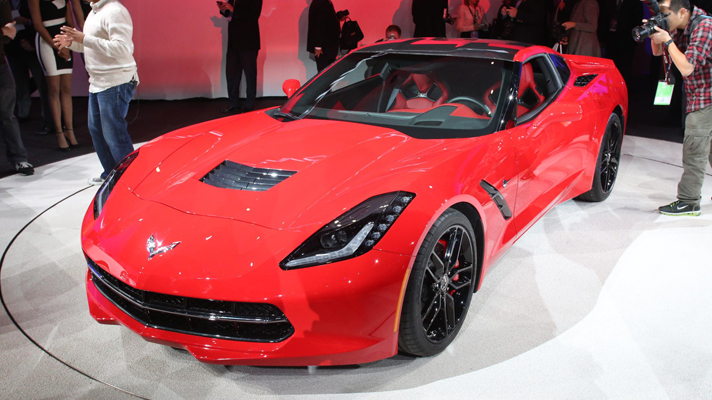
Here it is: the new Chevrolet Corvette
America, arise. Here's your newly-minted hero. And Europe, you can forget your old-world snobbishness. America's great sports car is today re-born. It's recognisably a Corvette, but its every component has had a hard-reset. If you want your hammering front-engined V8 rumble to come wrapped in the iridescent technologies of our age, you've come to the right place.
Brutal statistics first. It makes 450bhp and 450 torques from its all-new V8, and cracks 60mph from rest in under four smokin' seconds. Chevy people are so pleased with this, they've slapped on a badge historically reserved for some of the most knee-trembling Vettes of all. Yes, this one's a Stingray.
And that name, and those numbers, are just for the base model. What sort of craziness they'll unleash for the later 'performance' versions we can only begin to imagine.
The engine is still a pushrod V8 of 6.2-litres, but be not deceived. It's all-new, all-aluminium and all-fancy. Direct injection improves power and efficiency, and in gentler moments four cylinders are automatically deactivated so you combust on just a V4, to save fuel.
As before, the transmission lives between the backsides of the driver and passenger, to help weight distribution. What's new is the seven-speed manual.
It still uses a metal chassis structure with plastic body. But this time the chassis is lightweight aluminium and some of the panels – bonnet, roof – are carbonfibre. Those materials were reserved for the hi-po Z06 and ZR1 in the last model.
The glassfibre panels are lighter than before. Entirely fresh is the use of 'carbon-nano composite' for the underbody panels. Me neither. It's a sort staging post between glassfibre and carbonfibre reinforced composite. Lighter and stronger than glass, more feasible than carbon.
Overall, the aluminium frame saves 45kg over the old base car while being a whole lot stiffer. And the new panelwork is another 17kg down.
The suspension, all-wishbones, is lighter and stronger too. And the track's a bit wider. All of which means grip is fundamentally better: Chevy says the new car can corner faster on narrower tyres.
That's the mechanicals. The electronics are pretty top-end too. The Corvette's already sophisticated traction and stability controls have been tweaked and re-worked to act in concert with an electronically controlled limited-slip diff. The options list includes third-generation (the second was pretty fine) Magneride variable dampers.
Top Gear
Newsletter
Thank you for subscribing to our newsletter. Look out for your regular round-up of news, reviews and offers in your inbox.
Get all the latest news, reviews and exclusives, direct to your inbox.
Driver knob-twiddling can switch between a spectrum of characters, from low-courage low-mu bad-weather cruising to the full blood-and-thunder trackday experience. A mind-bending total of 12 different powertrain, chassis and steering and cockpit systems fall under the selector's influence.
That's because the Corvette is supposed to be an everyday GT as well as a lairy sports car. For the same reason, Chevy has poured unprecedented love into the Corvette's cockpit. The aim is to move it from something that was, let's be honest, a bit Fisher-Price into a place of enough quality to keep 911 drivers happy. And the squishy old seats have been ditched in favour of something that actually holds you in place.
There's an all-new hi-res electronic instrument display that reconfigures itself according to the drive mode. The central screen has gesture-recognition. The driver's head-up display takes another step onward. The passenger gets their own little climate-control screen. Screentastic.
So here we are, the big hit of the Detroit Show 2013. We all know what's going to light up the internet don't we?
Trending this week
- Car Review
BMW 1 Series










